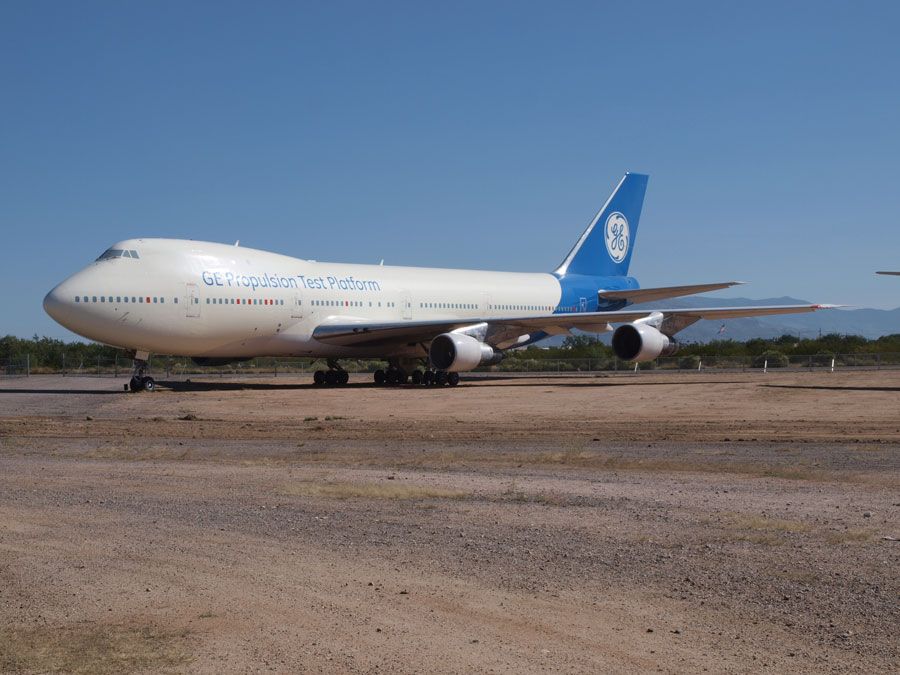Boeing 747-121
The Boeing 747 began as a concept for a U.S. Air Force contract competition to design a heavy lift cargo aircraft. That contest was eventually won by the Lockheed C-5 Galaxy, but Boeing’s failure to win that contract led it to develop one of the most iconic aircraft ever. The first 747 made its maiden flight in February 1969 and the type made its first commercial flight less than a year later. Since then the humpbacked shape of the 747 has become familiar to millions of travelers around the world. The “Jumbo Jet” is the first twin isle airliner and in some configurations could carry more than 500 passengers. This immense size allowed a much lower operating cost per seat and helped bring long distance air travel into the price range of vastly more people. Boeing has built more than 1,560 since 1969. As of 2018, only about 20 remain to be delivered. The era of the 747 as a passenger plane is coming to an end as it is replaced by more fuel-efficient twin-engine aircraft, but it will continue to be in use as a cargo plane for many years to come.
It was built by Boeing Aircraft Company at Everett, Washington and delivered to Pan American World Airways on March 21, 1970. It is the twenty-fifth 747 built. Following Pan Am’s practice of naming its aircraft, this airplane flew with the name “Clipper Star of the Union” until 1982 when it was renamed “Clipper Ocean Spray.” It remained with Pan Am until the bankruptcy of the airline in 1991. In March 1992 it was purchased by General Electric for use as an engine test bed. Since then the plane has flown more than 3,000 hours carrying various test engines for GE as they develop the engines that power many of the planes that are replacing the 747 in airline service. General Electric donated the aircraft to the Pima Air & Space Museum in November 2018.
Wingspan | 195 ft 8 in. |
Length | 231 ft 4 in. |
Height | 63 ft 5 in. |
Weight | 735,000 lbs (loaded) |
Maximum Speed | 595 MPH |
Service Ceiling | 45,000 ft |
Range | 6,000 miles |
Engines | Four Pratt and Whitney JD9D-3 turbofans with 43,000 pounds of thrust each |
Crew | 3 flight crew, 15 flight attendants, 374 to 490 passengers |
Manufacturer
Boeing
Markings
General Electric Aviation, 2018
Designation
747-121
Registration
N747GE
Serial Number
19651
